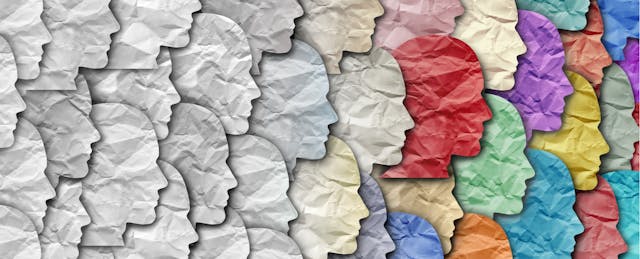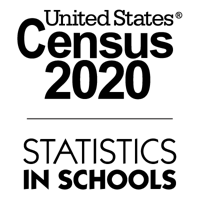Steve Kahlfeldt wants his students to grasp how the census impacts them right now, not in some far-off future. For example, the data determines how much funding Title I students receive for hot lunch programs, how much their families must pay in registration fees and whether there will be resources for after-school activities. That money also impacts staffing and resources for at-risk and special needs students.
Kahlfeldt has touched on the census many times in his 15 years as a middle school social studies teacher at Winfield School District 34 (22 years total as an educator). But as the 2020 census approaches, he's digging a little deeper.
Bolstered by his trademark energy and enthusiasm, along with educator resources from Statistics in Schools (SIS), he's motivating students to learn about statistical literacy, data analytics, interpreting maps and the overall significance of the census.
Here, Kahlfeldt explains why he's shining a spotlight on 2020. He also shares how his zesty attitude toward social studies makes lessons on the census—and many other topics—pop for his students.
EdSurge: Why is it essential for educators to talk about the census with students?
Kahlfeldt: Ten years ago, I covered the census, but in a basic way. I wasn't aware of the amount of financial help and services local communities can get from the federal government because of these numbers. I brought this up with the kids and explained that's why it's so important—that we've got to be accurate with the numbers.
The census helps companies plan where to create jobs; local governments plan where to build roads, schools, and hospitals; and finally helps students and organizations that research the numbers bring awareness to issues and possible solutions.
What are you doing, specifically, to educate your students about the census?
In eighth grade, when we're covering the Illinois government and state constitution, one big point is the census and redistricting—discussing how census data affects apportionment. I've also used Census Bureau statistics when seventh grade does research for geography. Then, we analyze those statistics and compare and contrast. But my sixth graders barely knew about the census because they're 12, and 10 years ago when the last census was taken, they were two.
But then my principal approached me about using the Statistics in Schools program materials and even applying to be an SIS ambassador over the summer, and I went for it. SIS did a wonderful job finding activities that relate to certain age and grade levels. They're well-organized. You're not looking at a list of 50 activities saying, 'I don't even know where to start.' The website is easy to use, and it's easy to download what you need.
I picked one called Diversity: Languages Spoken in the United States for my sixth-grade students. We had just finished exploring what community, civilization, culture and archaeology mean. This was a perfect follow-up activity. After doing the activity and seeing the discussions students had and the connections they made, I've decided to do two more before the census officially starts on April 1st.
Can you tell us more about that activity?
It focused on how diversity helps our communities thrive. Students were asked to predict what percentage of people in a state speak a language other than English at home. For my classes, I have tables of three students. I asked them to work on our home state of Illinois, and they could each choose a favorite state, so they wound up doing four states. I did one, too, because I wanted to show them that I was involved with this project also.
They quickly thought about the geography and culture of their states and wrote down their estimate. Then, using census statistics provided, they did the math, figured out the actual percentage and saw if they were close. It got them to analyze the statistics and explain their estimates. We talked about if they were surprised by any of the differences between their predictions and the actual numbers. Were any of them really close to what they thought it would be? It was cool to hear them react to the math they did.
We discussed which states they thought would have had the highest percentages and why the Census Bureau collects this type of data.
Then the last question was for them to ask their parents for input and opinions on what we just did. I heard some great comments from kids. A few said they actually educated their parents on the basics of the census.
Explore SIS Week
What did you like about the activity?
What I liked is how well SIS put together the teacher guide and the student activity worksheet packet. Everything was well prepared. I could follow directions easily. The kids could see a simple instruction, do something, move on to the next question.
There's math, geography and critical thinking involved. It's not just one-word answers. In just that one activity, there was a combination of a lot of excellent skills.
What I appreciate most is, we're not just talking about language at home. We're talking about the importance of the census, which is an important message I want to get through to them.
Last question, you're well known for your classroom energy; where does it come from?
I had a teacher that pushed the boundaries of my understanding of the world outside my private Catholic high school in Wheaton, Illinois. He got me excited about U.S. history. He had a lot of energy in the classroom. There were discussions, we were looking at maps, statistics—everything that I'm pretty much trying to do here as a teacher.
I use my voice to grab the kids' attention. I'm hopping around the room, not standing in the front. I get students to screen-mirror, sharing research and visuals from their district-issued iPads to our whiteboards, as much as I can. And discussion is big in my classroom, with student questions and responses often driving my classes.
When I see them respond and hear the discussions they have with each other and with me, I know my energy is rubbing off on them.
Using Statistics in Schools resources and activities in the classroom is educational and easy. The following resources include maps that help students at different grade levels understand the U.S. population, engaging videos on the importance of the 2020 Census, and a flyer explaining why and how to count all children in the 2020 Census.
| Maps | 2020 Maps | Capture the attention of students with large, colorful maps filled with fun census-based facts about the country and its territories. |
| Videos | 2020 Videos | Raise your students' 2020 Census awareness and enthusiasm by showing them the video best suited to their ages and grade levels, from pre-K through high school. Each video explains the value of census data and why it's important for everyone to be counted. |
| Activities | Pre-K Materials | These resources—available in both English and Spanish—explain the 2020 Census and introduce children to the concept of data and the importance of numbers in a fun and simple way. |
| Activities | K-12 Activities | Find activities specially designed to be engaging and appropriate for your students' grade level, from counting for kindergarteners to examining career statistics for high schoolers. |
| Activities | ELL/Adult ESL | Statistics in Schools activities created specifically for English language learners (ELLs) and adult English as a second language (ESL) learners feature data on the country's diversity. |
| Worksheet | K-12 Take-Home Flyer | Send this to adults in students’ homes to explain how and why to count all children who live with them for the 2020 Census. |


![4 Reasons Why the Census Matters for All of Us [Infographic]](jpg/blue_green_gradient45dd.jpg)
![4 Reasons Why the Census Matters for All of Us [Infographic]](jpg/blue_green_gradientcbfd.jpg)